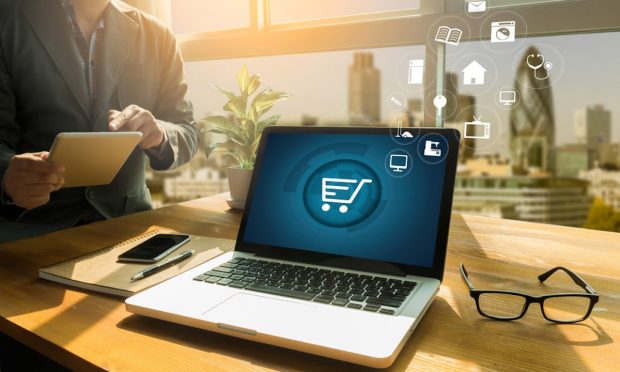Study: 29% of B2B Firms Expanded Use of Online Sales Channels

Companies are looking to expand their digital presence, and many are even beginning to consider eCommerce as the dominant channel through which they interact with clients and business partners.
In fact, 29% of B2B firms expanded their use of online sales channels in 2020, according to the Global B2B Payments Playbook, a PYMNTS and Worldpay B2B Payments collaboration. Of those companies, 33% said they only began making online sales within the past year.
Also see: Global B2B Payments Playbook
Moving to B2B eCommerce sales channels means more companies are exploring digital payment tools.
“Advancements in B2B payments tend to lag behind advancements in B2C payments, and are often subject to constraints imposed by the business logic and functionality in the ERP [enterprise resource planning] and financial systems used by enterprises,” Eric Bushman, vice president of solutions engineering at Worldpay B2B Payments, told PYMNTS. “That said, the pandemic has provided a clear focus on improvement of [the] workflows and technologies [that] process B2B payments, driving a move toward more diverse methods and channels of B2B payments — especially real-time payments.”
Bridging the Gap Between Multiple Systems
B2B firms still have much to catch up on in the eCommerce sector as they look to bring clunky processes that have been manual for decades into the virtual sphere.
Firms must work to bridge the gap between the multiple systems they use to manage the moving parts of the order-to-cash (O2C) process with their eCommerce platforms. Companies looking to digitize their B2B payments must also be sure that these solutions can integrate with the other parts of their payment flows, allowing them to seamlessly send all the necessary data as well.
Allowing any disconnection can lead to costly errors and frustrations that can slow down invoices or payments, eliminating the speed and transparency granted by digital solutions. Connecting the eCommerce platform with other systems in the ordering process is critical for businesses taking this next step.
Keeping Pace Within the Global B2B eCommerce Space
B2B companies looking to keep pace within the global B2B eCommerce space must also implement payment tools or technologies, such as instant payment networks or automation, to reduce friction attached to invoices. Firms could also consider how self-service invoicing solutions or automation for faster reconciliation could provide key benefits.
“These additional B2B payment methods and channels also drive the push for enterprises to engage with payment processing platforms [that] may have traditionally focused more on the B2C market and [have] platforms [that] provide value-added solutions — such as reporting portals with advanced analytics and reconciliation features, improved focus on [the] security of payment method account details, targeted solutions to improve payment acceptance rates, a focus on omnichannel acceptance and enhanced integration with ERP and financial systems,” Bushman said.
In this new environment, companies must carefully consider what payment methods or features could prove most beneficial and how they can best be applied. Staying on top of companies’ emerging payment preferences and needs will be essential to hitting the mark — now and in the future.
